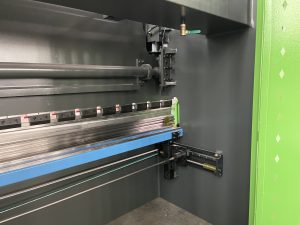Introduction
Shearing machines are essential tools used in various industries for cutting and shaping sheet metal, plates, and other materials. The blades utilized in these machines greatly influence their cutting capacity. This article delves into the significance of blade size and material, highlighting their role in determining cutting capacity and overall performance.
Blade Material
The choice of blade material is a crucial factor in shearing machine performance. Blades made of high-speed steel (HSS) or tungsten carbide coated materials exhibit superior durability and strength, enabling them to withstand high stresses and forces during cutting operations. These materials have excellent wear resistance, ensuring prolonged blade life and reduced maintenance requirements. Additionally, their hardness allows for consistent cutting performance, resulting in clean and precise cuts.
Blade Size
The size of the blades used in shearing machines directly correlates with the cutting capacity. The width and thickness of the blades impact the maximum cutting thickness and the overall performance of the machine.
2.1 Width: Wider blades provide a larger contact area, distributing the cutting force more evenly. This allows for efficient cutting of wider and thicker materials. Shearing machines equipped with wider blades offer enhanced stability and can handle greater cutting loads.
2.2 Thickness: Thicker blades exhibit increased rigidity and strength, allowing them to withstand higher cutting forces without deformation. This results in improved cutting performance and extended blade life. Machines equipped with thicker blades have a greater cutting capacity and can handle thicker materials with ease.
Cutting Capacity
Blade size and material directly influence the cutting capacity of shearing machines.
3.1 Material Type: Blades made from high-speed steel or tungsten carbide coated materials are particularly suited for cutting tougher materials such as stainless steel, alloy steels, and hardened metals. These blades can endure the higher cutting forces required for these materials, ensuring efficient cutting and minimizing blade wear.
3.2 Maximum Thickness: The thickness of the blades determines the maximum cutting thickness of a shearing machine. Thicker blades can handle greater material thicknesses, providing versatility in cutting various materials. Machines equipped with thicker blades offer enhanced cutting capacity and wider application range.
3.3 Precision: The choice of blade material and size also affects the precision of the cuts. Blades made from high-speed steel or tungsten carbide coated materials maintain their sharpness for longer periods, resulting in cleaner and more accurate cuts. Additionally, wider and thicker blades contribute to better stability and reduced vibration, further enhancing the precision of the cutting operation.
Conclusion
Blade size and material are critical factors when considering the cutting capacity of shearing machines. Blades made of high-speed steel or tungsten carbide coated materials ensure durability, longevity, and consistent cutting performance. Moreover, the width and thickness of the blades directly influence the maximum cutting thickness and overall stability of the machine. Understanding the relationship between blade size, material, and cutting capacity enables operators to select the most suitable blades for their specific cutting requirements, ensuring optimal performance and efficient material processing in shearing operations.


